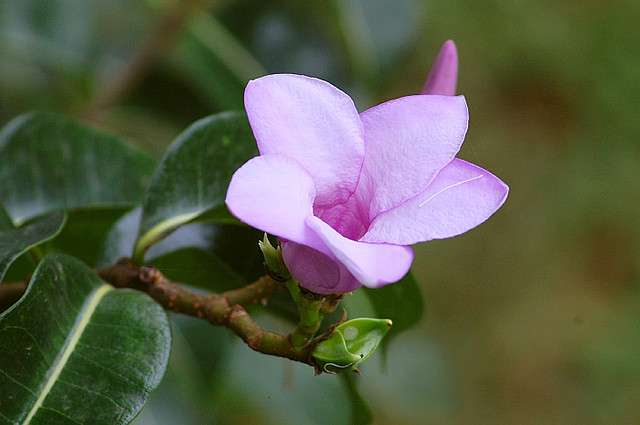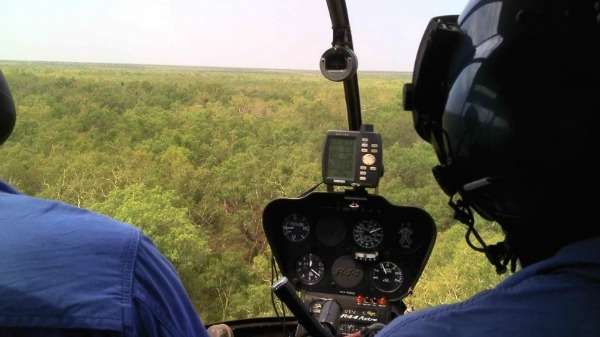Citizen science and technology team up to wipe out Kimberley weed

Citizen science and technology have combined to eradicate the ornamental rubber vine (Cryptostegia grandiflora) from the area surrounding the Fitzroy River, in the Kimberley.
As part of the Aquila project, volunteers are helping scientists to examine images of the region for signs of the rubber vine, which get uploaded to the internet and can be viewed on computers from the comfort of their own home.
This year is the first time volunteers have been used in the fight to eradicate the weed after the project received $40,000 over two years from the State NRM Strategic grants program which is supported by Rangelands NRM.
For the past four years, researchers have been working steadily to remove the rubber vine from around the Fitzroy River.
Project manager John Szymanski says each year the team did a low-level aerial survey in a helicopter and a few years ago decided to affix cameras underneath the helicopter.
"Every year we do a helicopter survey of the whole infestation area which is about 260 square kilometres, it takes about 12 days and 70 hours in the actual search chopper, six hours a day," he says.
He says this year they had taken a complete imagery of the area, taking 90 images a minute or one photo every nine metres, which was done after the wet season when the rubber vine has white flowers that are visible in photos.
Mr Szymanski says once the 83 Aquila project volunteers has logged on to the website, an image—one of 350,000 images divided into 12 sections—will pop up and they can examine the image for the distinct white flowers.

If they find nothing, they can click on a button to confirm they didn't find any rubber vine and move on to the next photo.
Mr Szymanski says if they detect a vine, the volunteer clicks on the button saying "vine here" and he will receive an email with the image, which he can check and confirm.
He says involving the volunteers added an extra pair of eyes to the search.
"The importance of this is because now at the end of this eradication process, precision is crucial so the higher the probability of detection the more quickly we can achieve eradication," he says.
The team has killed about 300,000 rubber vine plants in the past four years and believe there are probably no more than 200 left.
Mr Szymanski says once they have shown that this model can work, then it can be applied to other weeds or other programs.
Provided by Science Network WA




















